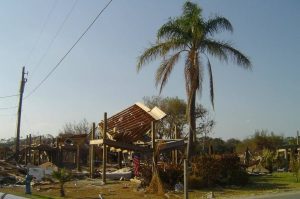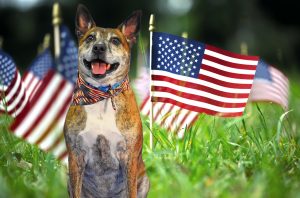Message from the President: TASP’s Position on the 2017 Gulf Hurricanes
TASP has received many enquiries about our plans for responding to the Gulf hurricanes this season. At this time, several of our key people are massaging our schedules to comply with requests received from ASPCA and RedRover. As an all-volunteer organization, we have to be sure that when we, as individuals, are planning travel across the country to support animals victimized by a natural disaster, the needs of our own families, jobs and animals are provided for. So will TASP people be traveling to the gulf to help? Based on our individual situations, several of us are planning to respond with the national groups who have been invited in by the local jurisdictions, and with whom we already have relationships.
In the meantime, for those of you who want to help the animals and people currently under duress in the gulf, please consider making a financial donation to any one of the NARSC (National Animal Rescue and Sheltering Coalition) organizations who are responding. If you aren’t sure who’s really a part of this qualified coalition, CLICK HERE for a link to the list of the current NARSC membership: . And remember that the well being of pets depends on the well being of their owners. Don’t underestimate how important pets are to the people who were evacuated from their homes in Texas, Louisiana, Florida and surrounding areas. These people need to get back on their feet asap and get their families back to something like normal. Organizations like The Salvation Army are the vital link to that. Your donation, made specifically for Harvey or Irma (or Jose? Maria?) Response, will go a long way toward bringing people and pets home.
Just a reminder to all of you who have been worrying about this: The south is used to bad storms and flooding and they have learned a lot from past experiences. Don’t forget that there are many qualified rescues and national animal welfare organizations who have an abundance of trained, qualified staff and volunteers located within driving distance of the disaster. Animal disaster response is handled much differently now (thank God), compared to the way things were handled after Hurricane Katrina. If you watched any news footage of the human rescues for Harvey and Irma, there were many images of animals and their people all leaving the home together. Thanks to lessons learned, many human shelters now allow pets in the same or a nearby separate shelter, so pet owners and pets can remain connected until they can all go back home. This works very well and has been used for years very successfully. Ever since George W. Bush’s PETS Act went into effect, local SARTs/CARTs (State/County Animal Response Teams) in the gulf have been drilling regularly in preparation for something like a Harvey or an Irma. They have had trailers filled with supplies and volunteers with go-bags already packed, ready for deployment when the call comes. Starting this August, the call came and came again; and all that preparation was put to work for the good of the pets in the gulf.
All the major states and cities in the gulf (and around the country, for that matter) have advance contracts called, “Memoranda of Understanding” already established with all sorts of non-governmental organizations for situations like hurricanes and other disasters. When the local jurisdictions feel they can’t manage the animal situation on their own, they contact the animal welfare organizations they’re already contracted with and invite them to enter the disaster zone to help the locals rescue and/or care for the displaced animals. The same “Incident Command” protocol used by fire, rescue and military is used now by all the bona fide Animal Disaster Response organizations in the NARSC coalition. This way, there is mutual accountability, communication and tracking that will sustain the mission and ensure the best possible outcome for pets and people.
Many months from now, when the gulf’s inhabitants are back on their feet and the emergency pet shelters and boarding facilities begin to deactivate, there may be a need for animals who were not reclaimed to be sent to foster care or to pre-qualified municipal shelters and rescues. Some may even be sent as far north as our back yard. But until that emergency sheltering/boarding period is over, the NARSC animal welfare organizations will not likely be sending owned hurricane animals anywhere. One of the primary purposes of emergency animal sheltering is to hold the animals until they are reclaimed by their owners. We are obligated to allow the owners to have their pets back once they are able to take them. You would expect the same courtesy if you were in their shoes, right? Animals who were already in the shelter prior to the hurricane’s arrival ARE being moved out to other shelters outside the disaster zone, and one local shelter, Mohawk Humane Society, actually just received 23 animals from a Texas shelter and is taking another 30 from Florida shelters. But if someone asks you to finance their trip to the gulf today to bring back animals and they’re not affiliated with one of the authorized member organizations, you might want to ask a lot more questions before opening your wallet.
Thank you all for caring and praying about this situation. Having worked plenty of disasters in the past, I can tell you there are few sights that compare with the look on a displaced person’s face when they are with their beloved pet, no matter what else they may have lost. As the hurricane season continues to evolve, we will be bringing you our own personal accounts of what we find when we deploy to wherever we’re needed. Until then, take comfort in knowing it’s a blessing for something like a Harvey or an Irma to happen in 2017 instead of 2007; animal disaster response has come a long way since then.




